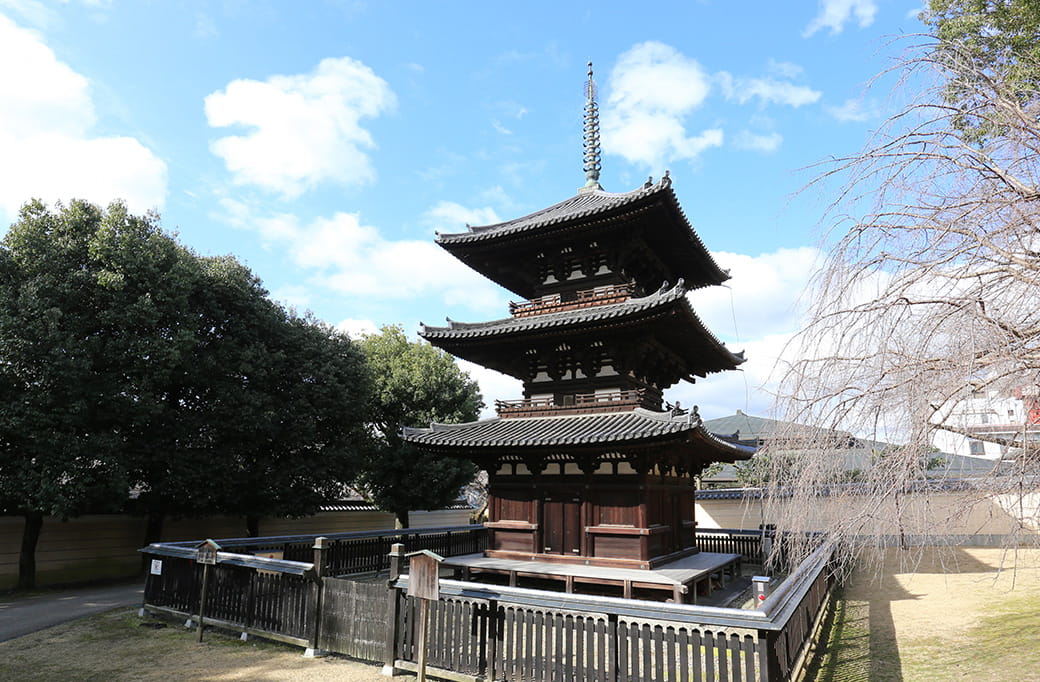Three-storied Pagoda
National Treasure

The three-storied pagoda was originally built in 1143 at the behest of Fujiwara no Kiyoko (better known by the title Kōkamon’in; 1122–1182), the consort of Emperor Sutoku (1119–1164). The present structure was erected shortly after the destruction of the entire temple complex in 1181, making it one of the two oldest buildings at Kohfukuji today, along with the Northern Round Hall.
Standing 19 meters tall, the pagoda is known for the delicate lines and graceful appearance that make it an outstanding example of the Buddhist architecture of the Heian Period (794–1185).
The pillars and lintels of the inner sanctuary, as well as the ceiling, inner walls, and inside faces of the four doors, were richly decorated with floral arabesque patterns and paintings of Buddhas, Bodhisattvas, pavilions, and what appear to be images of patrons. The first story contains a set of four murals painted on wooden panels that each depict 1,000 images of one of four Buddhas: Yakushi facing east, Shaka facing south, Amida facing west, and Miroku facing north.
In addition, an image of the goddess Benzaiten said to have been installed in the temple by the famous monk Kōbō Daishi (Kūkai; 774–835) is enshrined on the eastern face of the central pillar surrounded by images of 15 attendants. On the crown of Benzaiten stands a Shinto-style torii gate under which a snake with the face of an old man is coiled up. This indicates that the image is a combination of the Indian goddess Benzaiten (Skt. Sarasvatī) with the native Japanese deity Ugajin.

